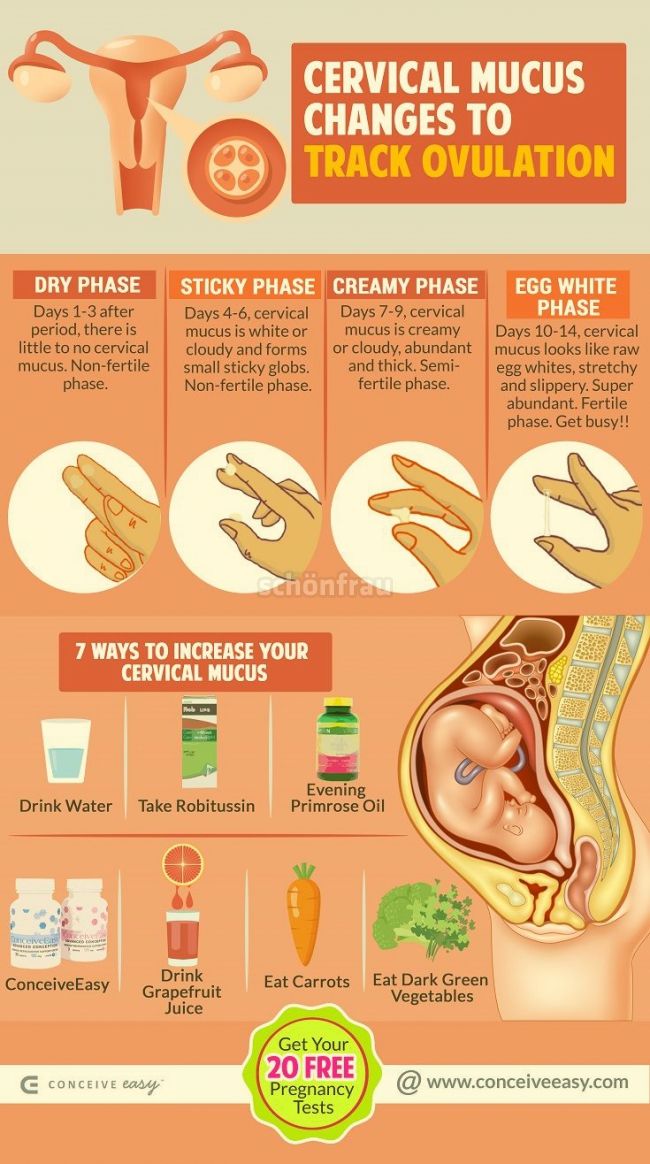Different discharge during pregnancy
Vaginal discharge during pregnancy: Color and meaning
Pregnancy causes changes in vaginal discharge, which can vary in color, texture, and volume. An increase in vaginal discharge is often one of the earliest signs of pregnancy. Some changes in color are also normal, while others may indicate infection or another problem.
Color is one of the most noticeable changes that can occur. Discharge can be:
- clear or milky white
- white and lumpy
- green or yellow
- gray
- brown
- pink
- red
This article discusses vaginal discharge during pregnancy, including what the different colors of discharge mean and when to see a doctor.
It is normal to have discharge at various stages of the menstrual cycle and during pregnancy.
Healthy vaginal discharge, also called leukorrhea, is thin and clear or white and has only a mild odor.
The volume of discharge increases throughout pregnancy to reduce the risk of vaginal and uterine infections.
Discharge is at its most heavy in the final weeks of pregnancy, when it may contain pink mucus.
The mucus is typically sticky and jelly-like in consistency, and it indicates that the body is preparing for labor.
The various colors of vaginal discharge may indicate different health issues. These include:
Clear or milky white
This color suggests leukorrhea, which is usually a normal and healthy discharge, especially if it smells mild.
However, any changes in its quantity or consistency may suggest an issue. A woman who is pregnant but not yet at full term should see a doctor if she experiences an increase in clear discharge that leaks continuously or becomes thick and jelly-like.
These changes may suggest preterm labor.
White and lumpy
Vaginal discharge that is lumpy and either white or off-white, resembling cottage cheese, can indicate a yeast infection.
Yeast infections are common, and the body is particularly susceptible to them during pregnancy. Other symptoms include itching, burning, and painful urination or intercourse.
Other symptoms include itching, burning, and painful urination or intercourse.
Green or yellow
Green or yellow vaginal discharge is not healthy and suggests a sexually transmitted infection (STI), such as chlamydia or trichomoniasis. Other possible symptoms include redness or irritation in the genitals. STIs sometimes do not cause any symptoms.
According to the Centers for Disease Control and Prevention (CDC), STIs can cause complications during pregnancy that can affect both the woman and child. These complications sometimes do not present until years after the birth, but they can affect the nervous system and development of the child and cause infertility in the woman.
People may occasionally think that they have yellow discharge when they are merely leaking small amounts of urine.
Gray
Gray vaginal discharge may indicate a vaginal infection called bacterial vaginosis (BV), particularly if it also has a fishy smell that becomes stronger following intercourse.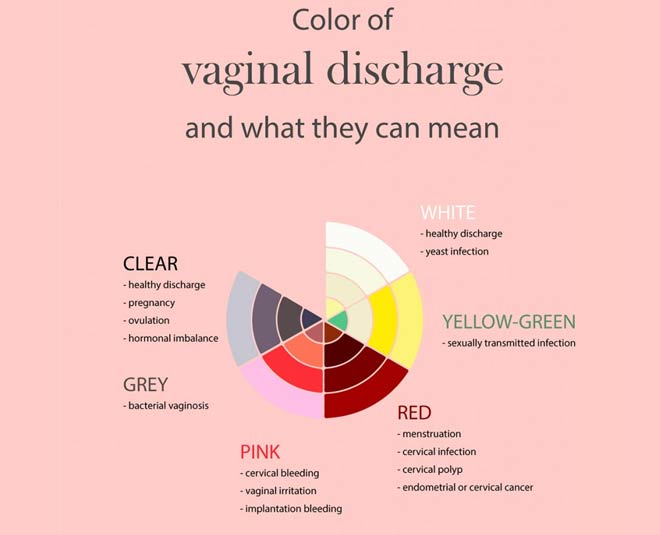
BV is the result of a bacterial imbalance in the vagina. Douching and having multiple sexual partners are risk factors for BV, which is the most common vaginal infection during childbearing years.
Brown
Discharge is usually brown due to old blood leaving the body, which can be an early symptom of pregnancy. Brown discharge during pregnancy is not generally a cause for concern.
However, pregnant women who experience dark brown discharge should contact their doctor.
Pink
Pink discharge during pregnancy may or may not be normal. Discharge with a pink hue often occurs during early pregnancy or in the final weeks as the body prepares for labor. It can also occur before a miscarriage or during an ectopic pregnancy.
A study with 4,510 participants found that spotting and light episodes of bleeding during the first trimester, especially those persisting for just 1 to 2 days, did not correspond with a higher risk of miscarriage.
Other causes of light spotting during pregnancy include sexual intercourse and vaginal infections.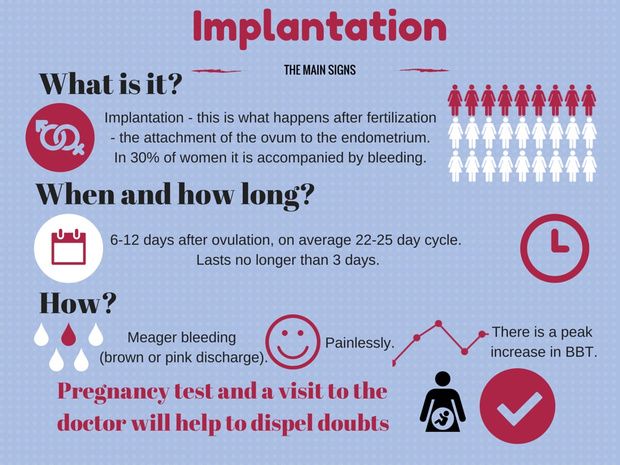
Red
Red vaginal discharge during pregnancy requires the immediate attention of a doctor, especially if the bleeding is heavy, contains clots, or occurs alongside cramping and abdominal pain.
These symptoms suggest miscarriage or ectopic pregnancy. Approximately 10 to 15 percent of pregnancies end in miscarriage, which people may also refer to as pregnancy loss.
Other causes of red discharge may be less serious, especially during the first trimester, when it may result from implantation or infection. Studies indicate that between 7 and 24 percent of women bleed during early pregnancy.
Bleeding later in pregnancy can indicate potentially serious issues or preterm labor, which will require immediate medical attention.
An increase in the volume of mild-smelling vaginal discharge during pregnancy is normal, but unusual colors and odors often indicate infection.
A doctor can prescribe antibiotics or other medications to treat infections in this area of the body.
Women can usually maintain vaginal health during pregnancy by doing the following:
- Avoiding using tampons.
- Avoiding douching.
- Choosing unscented personal care products and feminine hygiene items, including unscented toilet paper and soaps.
- Wearing panty liners to absorb excess discharge.
- Wiping the genital region from front to back after passing urine or stool.
- Drying the genitals thoroughly after showering or swimming.
- Wearing underwear made from a breathable fabric.
- Avoiding wearing tight jeans and nylon pantyhose, which increase the risk of infection.
- Eating a healthful diet and avoiding too much sugar, which can encourage yeast infections.
- Trying probiotic foods and supplements that are safe to consume during pregnancy, which may prevent bacterial imbalances in the vagina.
It is essential to discuss any unusual discharge with a doctor as this symptom may suggest an infection that requires treatment or an issue with the pregnancy. Without treatment, infections can lead to complications.
Without treatment, infections can lead to complications.
An increase in discharge during pregnancy is normal, but unusual discharge alongside strong odors or discomfort in the vagina or abdomen is often indicative of a health issue. This is also the case for discharge that is green, yellow, or gray.
Women should seek immediate medical care if they experience spotting or bleeding that is heavy, persists for more than a day, or occurs alongside pain or cramps.
Read this article in Spanish.
Bleeding during pregnancy: When to worry about spotting in pregnancy
A little light bleeding or spotting during pregnancy is common, especially during the first trimester. Heavier or more consistent bleeding could signal a problem with the pregnancy. Early pregnancy bleeding can happen when the fertilized egg implants, or it could be from something more serious like a miscarriage or ectopic pregnancy. Common causes of bleeding later in pregnancy include placental problems or preterm labor. Any bleeding is worth letting your doctor know about as soon as possible, especially if it's heavy or it doesn't stop.
Any bleeding is worth letting your doctor know about as soon as possible, especially if it's heavy or it doesn't stop.
Is it normal to have spotting during pregnancy?
A little light bleeding or spotting during pregnancy is common, especially in early pregnancy. Up to one in four pregnant women have some light bleeding in their first trimester. But even if the bleeding seems to have stopped, call your doctor, just to make sure everything is okay.
Spotting or light bleeding in pregnancy is probably from something minor. But it could also be a sign of a serious problem, such as an ectopic pregnancy, a miscarriage, or an infection.
Your doctor may want to do some tests, which can include a physical exam, an ultrasound, and blood tests, to check how well you and your baby are doing and to rule out any complications.
If you're actively bleeding or you have severe pain and can't reach your doctor, head to the emergency room right away.
What's the difference between spotting and bleeding during pregnancy?
Spotting is very light bleeding, similar to what you may have at the very beginning or end of your period. It will look like small drops of blood on your underwear, varying in color from pink to red to brown (the color of dried blood). Pregnancy spotting is common, especially during the first three months.
It will look like small drops of blood on your underwear, varying in color from pink to red to brown (the color of dried blood). Pregnancy spotting is common, especially during the first three months.
Bleeding means that you need to wear a panty liner or pad to avoid soaking your underwear. And heavy bleeding will soak through one or more pads. Continued or heavy bleeding could signal a problem with your pregnancy, which is why it's important to share with your doctor right away.
Early pregnancy bleeding: What causes it?
The most common causes of light spotting or bleeding during early pregnancy include:
Implantation. Some women have spotting even before they know they're pregnant, about a week or so after they ovulate. It's called "implantation bleeding" because it happens when the fertilized egg burrows (or implants) into the blood-rich lining of the uterus, a process that starts just six days after fertilization.
If you have a day or two of spotting in the week before your period is due, take a home pregnancy test. If the result is negative, wait a few days or a week. If your period doesn't start when you expect it, try testing again.
If the result is negative, wait a few days or a week. If your period doesn't start when you expect it, try testing again.
Subchorionic hematoma. Also called a subchorionic hemorrhage, this kind of bleeding can happen when the outer layer of the amniotic sac (chorion) separates from the wall of the uterus. It’s usually harmless and stops on its own. Small collections of blood like this early on are typically harmless. But if the collection of blood is larger, it will take longer to reabsorb, or go away. This can raise the risk of miscarriage or preterm labor, so your doctor may want to check on it regularly with ultrasound.
Miscarriage. Spotting or bleeding in the first trimester, especially if you also have abdominal pain or cramping, can be an early sign of miscarriage. But it isn't necessarily a sign, and actually, about half of women who miscarry don't have any bleeding prior to diagnosis. Other signs of a possible miscarriage are discharge of liquid or tissue from your vagina, and no longer feeling any pregnancy symptoms (like morning sickness). If feeling better is your only symptom, however, try not to worry! Many pregnant women don't experience nausea in the first trimester and have very healthy pregnancies.
If feeling better is your only symptom, however, try not to worry! Many pregnant women don't experience nausea in the first trimester and have very healthy pregnancies.
Ectopic pregnancy. Early pregnancy bleeding also can warn of an ectopic pregnancy – when the embryo implants outside the uterus, usually in one of the fallopian tubes. Sometimes bleeding is the only sign, but other common symptoms include pain in the belly, pelvis, or shoulder. An ectopic pregnancy can be life-threatening, so let your doctor know right away if you have bleeding or moderate to severe pain in your first trimester.
Molar pregnancy. This rare complication happens when the placenta doesn't develop properly, and it can't sustain the embryo. A molar pregnancy can be serious, and it needs prompt treatment.
Infection. An infection can irritate or inflame your cervix and make it more likely to bleed, especially after you have sex. These are some of the infections that can cause bleeding:
These are some of the infections that can cause bleeding:
- Chlamydia
- Gonorrhea
- Herpes
- Yeast infection
- Trichomoniasis
Because certain infections can cause pregnancy complications, your doctor might prescribe antibiotics or another treatment.
You might also notice some spotting or light bleeding after sexual intercourse or a pelvic exam. More blood flows to your cervix during pregnancy, so it's not unusual. A cervical polyp (a noncancerous growth on the cervix) can also cause spotting or bleeding after sex or an exam.
What causes second or third trimester bleeding?
Bleeding later in pregnancy might also be nothing to worry about. Light bleeding could be a sign of harmless inflammation, a cervical polyp, or other changes in your cervix. And a few days before your delivery date, bloody discharge called "show" is a sign that your cervix is getting ready for labor.
Heavy bleeding late in your pregnancy is a more worrisome sign. It's worth making a call to your doctor right away.
It's worth making a call to your doctor right away.
Here are some common causes of bleeding in your second and third trimesters:
Placental problems. Bleeding or spotting after the first trimester can be a sign of a problem with the placenta, such as:
- Placenta previa, when the placenta partially or fully covers the cervix; usually this is diagnosed at your mid-pregnancy ultrasound or anatomy scan. Your placental location will continue to be monitored as pregnancy progresses, and your obstetrician will recommend that you abstain from intercourse as long as the placenta is over or near the cervix.
- Placenta accreta, when the placenta becomes abnormally embedded in the uterine wall. Although this is a rare complication, the risk slowly increases with each cesarean delivery.
- Placental abruption, when the placenta entirely or partially separates from the wall of the uterus. This is more likely to occur as a result of trauma (car accident, domestic violence), uncontrolled hypertension, or labor.
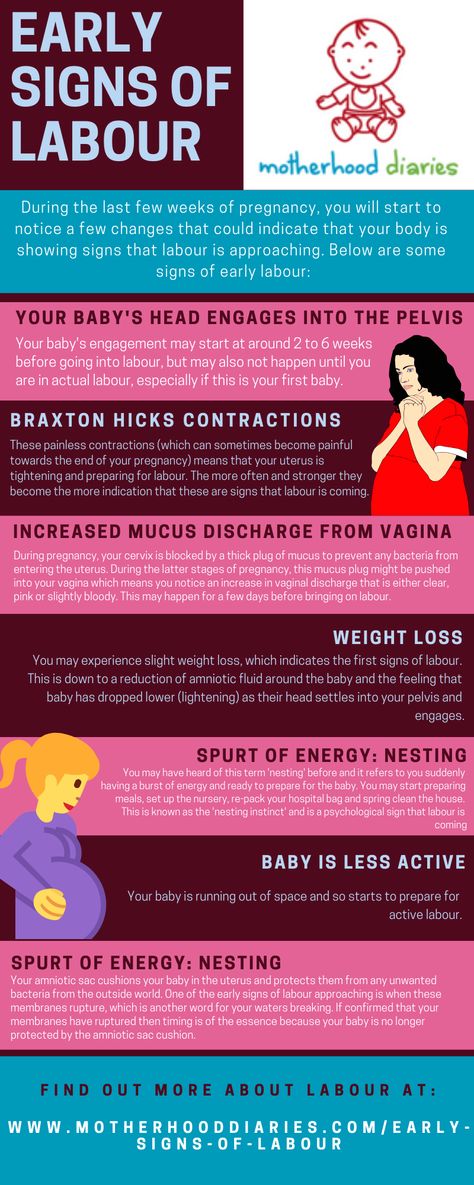
Late miscarriage. Most miscarriages happen in the first trimester, but bleeding between 13 weeks and the middle of your pregnancy can be a sign of late miscarriage.
Preterm labor. Bleeding is one sign of preterm labor (labor that starts before 37 weeks). Other symptoms are:
- Abdominal pain, cramps, or contractions
- Low backache
- Changes in vaginal discharge
- Pressure in your pelvis or lower abdomen
How much bleeding during pregnancy is normal?
Some light bleeding is normal, especially early in your pregnancy when the fertilized egg implants. But really, bleeding can happen at any point in your pregnancy, and for many different reasons. And because some causes are more serious than others, it's always a good idea to let your doctor know about it.
Heavier bleeding that soaks through a pad, or bleeding that doesn't go away is more concerning. It could signal a serious problem with your pregnancy that needs immediate medical attention.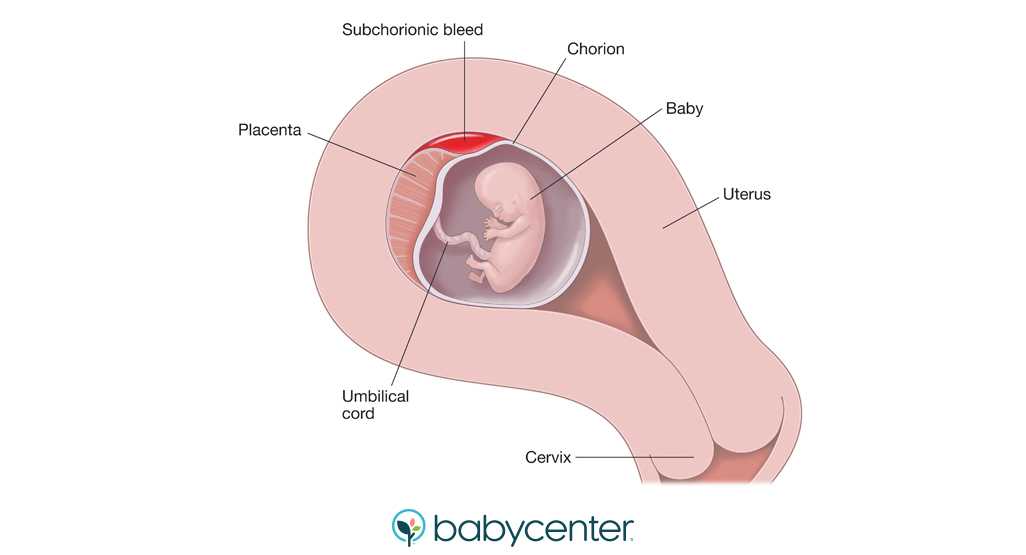 Calling your doctor right away or going to an emergency room could help you head off a problem and protect both your health and your baby's.
Calling your doctor right away or going to an emergency room could help you head off a problem and protect both your health and your baby's.
When should I call my doctor about spotting or bleeding during pregnancy?
Any type or amount of bleeding in pregnancy is worth calling your doctor about, to make sure that nothing is wrong. This is important, even if your last ultrasound showed that your baby is healthy and growing according to schedule.
Heavy or consistent bleeding is a reason to call immediately. Your doctor can check for any problems, and either reassure you that you're ok, or treat the problem.
When you call your doctor, let them know how long you've been bleeding and how much you've bled. Also tell them about other symptoms, like cramps, that you've had along with the bleeding. Also, be sure to be honest with them about recent sexual activity and medical history when you call.
Lastly, whenever the bleeding occurs, if your blood type is RH-negative, your doctor will want to make sure you get a Rhogam shot to protect future pregnancies. Call your doctor if you are RH-negative and have bleeding anytime in pregnancy. If you are RH-positive, this isn't something you have to worry about.
Call your doctor if you are RH-negative and have bleeding anytime in pregnancy. If you are RH-positive, this isn't something you have to worry about.
Learn more:
- Pregnancy symptoms you should never ignore
- Vaginal discharge during pregnancy
- Rectal bleeding during pregnancy
advertisement | page continues below
articles of the Oxford Medical clinic Kyiv
Contents:
-
What discharge during pregnancy is considered normal?
-
When should you see a doctor for discharge?
-
Discharge during early pregnancy
-
Discharge during late pregnancy
-
Discharge during pregnancy by color0005
During pregnancy, a woman's body undergoes a number of physiological changes - her body changes, adapts to carrying a baby and future childbirth.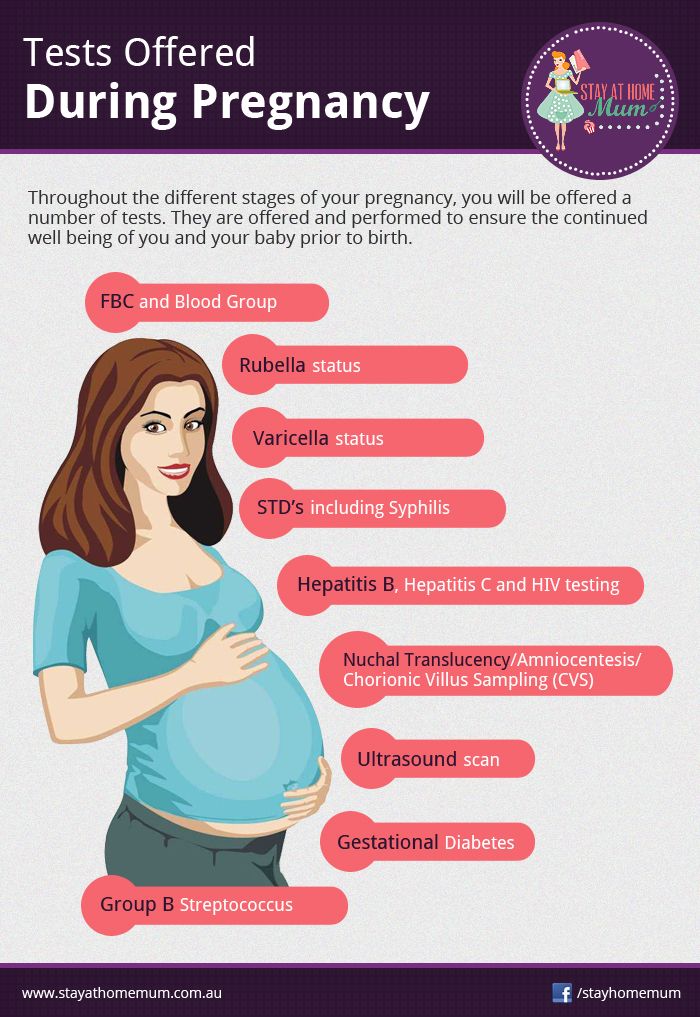 Changes can also occur with vaginal discharge. After conception, their number or color may become different, which often makes a woman worry. In order not to worry for no reason, but also not to miss a possible reason to see a doctor, you need to know which discharges are normal and which are not.
Changes can also occur with vaginal discharge. After conception, their number or color may become different, which often makes a woman worry. In order not to worry for no reason, but also not to miss a possible reason to see a doctor, you need to know which discharges are normal and which are not.
What discharge during pregnancy is considered normal?
The nature of the discharge at different stages of pregnancy may vary slightly. Standard variant are:
-
transparent or white discharge;
-
odor free;
-
not exceeding the usual volume;
-
not accompanied by itching, burning or other painful symptoms.
At the same time, in the first 2-4 weeks, the daily discharge may increase slightly and become thicker. It is also possible the appearance of light spotting within a few hours or a day, which occurs as a result of the implantation of the embryo to the uterine wall.
It is also possible the appearance of light spotting within a few hours or a day, which occurs as a result of the implantation of the embryo to the uterine wall.
When should you see a doctor for discharge?
During pregnancy, a woman is advised to visit a gynecologist regularly for examinations and tests. First, consultations are prescribed once a month, and then once every 2 weeks. This allows you to carefully monitor the health of the pregnant woman and the development of the fetus. But, if discomfort appears, you need to see a doctor as soon as possible.
One of the alarming symptoms is the appearance of atypical discharge:
-
yellow, green, brown;
-
bloody;
-
thick;
-
too abundant;
-
slimy;
-
malodorous;
-
accompanied by itching, burning and other symptoms.

Such a change in the nature of the discharge may be associated with the development of an inflammatory or infectious disease, as well as complications of pregnancy. To find out the exact cause, you need to do tests, conduct an ultrasound and, if necessary, other studies.
Discharge during early pregnancy
When conception occurs, changes begin in the body. First of all, the synthesis of the hormone progesterone increases and blood flow to the pelvic organs increases. These processes are often accompanied by profuse vaginal discharge. They can be translucent, white or with a slight yellowish tint. There should be no unpleasant odor or skin irritation.
Shortly thereafter, progesterone levels decrease and estrogen levels rise. At this time, a mucous plug is formed that covers the cervix. Its formation can also cause increased secretion, but gradually it should decrease and become more liquid and transparent.
In addition, in the first weeks, the ovum attaches to the wall of the uterus, which can cause light brown discharge. As a rule, they are scarce and quickly stop - within a few hours or a day. If heavy bleeding has begun, you should immediately consult a doctor.
Approximately from 5 to 20 weeks, the discharge should be the same - transparent or whitish, in small volume, odorless.
Discharge in late pregnancy
From 20 to 40 weeks of pregnancy, the discharge is normally white, free of impurities and unpleasant odor.
In the last week before childbirth, the discharge may become thinner. If they are very abundant, leakage or discharge of amniotic fluid is possible, which requires a visit to a doctor.
Characterization of pregnancy discharge by color
Normal discharge should be colorless or white. A change in color and consistency may indicate the development of a disease or complications of pregnancy.
Bright or dark yellow discharge most often occurs when inflammation develops. Grey-green and green may result from infection. Thick white discharge speaks about it - as a rule, candidiasis manifests itself. Brown discharge may be due to slight bleeding.
Oxford Medical says it is important to consider not only the color of the discharge, but also its smell, volume and consistency. A sharp and unpleasant odor appears only with bacterial or fungal diseases, so it should by no means be ignored. Also, an alarming signal is a strong increase in the volume of secretions, a change in structure, foaminess and other deviations from the norm.
There can be many reasons for abnormal discharge. To find them out, you need to conduct examinations, and then, if necessary, treatment.
Bloody discharge during pregnancy
The appearance of bloody discharge at any stage of pregnancy is a reason to immediately consult a doctor.
The exception is small spotting in the first weeks (usually the date of the expected menstruation), which indicates the implantation of the embryo. At this point, capillaries and small vessels can be injured, which causes light bleeding. Normally, it is very weak, not accompanied by pain or other unpleasant symptoms.
Blood-streaked discharge may also occur on the eve of childbirth as a result of cervical dilatation. This is normal, but a doctor's consultation is required.
In other cases, both in the first and last trimester, any discharge from pale pink and brown to red is a dangerous symptom. The violation may be minor, but it is necessary to conduct an examination.
Bleeding can be caused by:
-
hormonal disorders;
-
cervical erosion;
-
cysts;
-
fibroids;
-
inflammatory and infectious diseases;
-
ectopic pregnancy;
-
miscarriage;
-
placental abruption;
-
threatened miscarriage or premature birth.
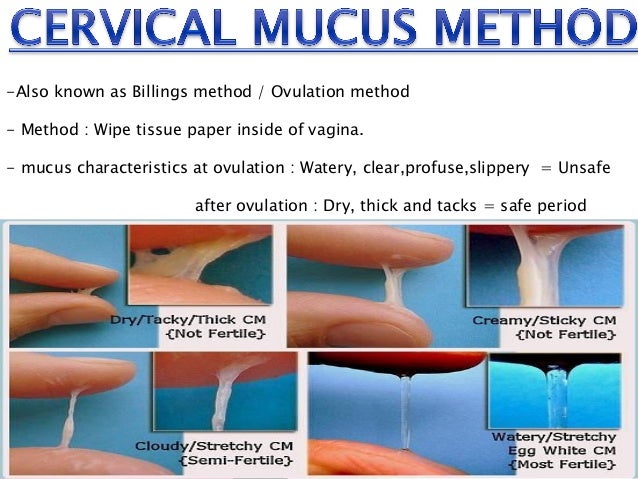
Regular follow-up with an experienced obstetrician-gynecologist and the implementation of all recommendations will help to avoid possible complications and concentrate on the most important thing - the joyful expectation of the baby and preparation for meeting him.
Increased vaginal discharge during pregnancy is natural
Normal pregnancy discharge is milky white or clear mucus without a strong odor (although the smell may change from before pregnancy), this discharge does not irritate the skin and does not cause discomfort to the pregnant woman. The discharge can have a different color - from completely colorless (most often) to whitish and yellowish. The consistency of discharge at the beginning of pregnancy resembles raw chicken yolk - they are thick, jelly-like, often released in the form of clots.
With normal discharge, it is enough to use panty liners or change underwear twice a day.
Due to the activity of progesterone in the first 12 weeks of pregnancy, the discharge will be scarce and viscous.
Due to the increase in estrogen activity from 13 weeks, the discharge becomes less viscous and more abundant.
By the end of the pregnancy, vaginal discharge becomes more and more abundant. Each time you need to evaluate the nature of the discharge, change the gasket. If the fluid continues to ooze, this may mean leakage of amniotic fluid and the need to contact an obstetrician-gynecologist in the emergency department of a hospital with a maternity ward. There are auxiliary tests, thanks to which, as well as obstetric ultrasound, leakage of water can be excluded.
Not all discharge in pregnant women is the norm.
For example, a white, thick, crumbly, odorless discharge that itchs and burns the skin and causes discomfort during intercourse is likely a sign of a yeast infection (candidiasis).
White or grayish discharge, the smell of which after sex begins to resemble the smell of fish, is the main symptom of bacterial vaginosis, vaginal dysbacteriosis.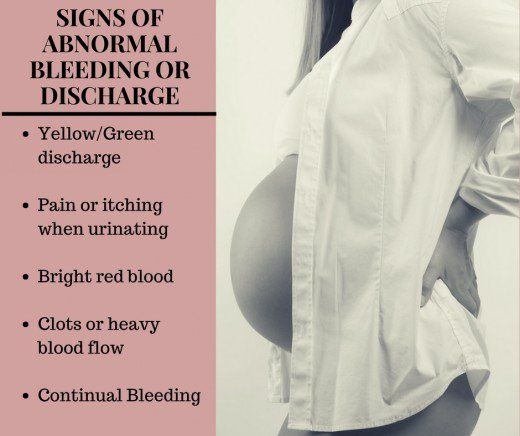
A yellowish or greenish discharge that has a strong unpleasant odor usually occurs with nonspecific vaginitis, and a foamy discharge is a sign of trichomoniasis, a sexually transmitted disease.
In all these cases, contact your doctor immediately. It should not be treated with over-the-counter drugs and folk remedies. According to some external signs, a diagnosis cannot even be made by a doctor, in addition, infections in pregnant women should be treated especially carefully and only by a professional. After proper treatment, the discharge returns to normal. There is no need to get rid of the usual discharge for pregnant women. After childbirth, they will stop naturally, and before that they are a sign of the normal course of pregnancy.
Allocations can change their nature and amount under the influence of irritants or intolerance to a particular substance, for example, when using panty liners. Such secretions are transparent and abundant, they stop when the irritant is removed.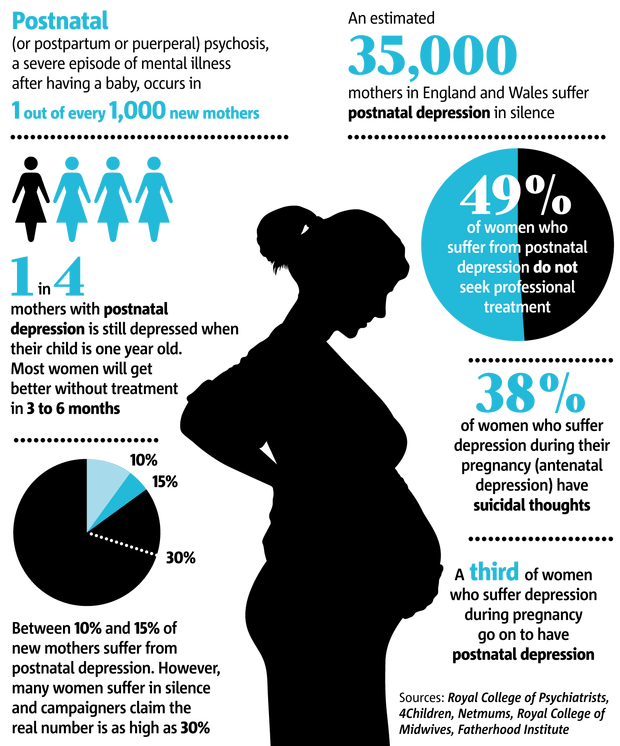
"Thrush" is a disease caused by fungi of the genus Candida, present in small quantities in all women. During pregnancy, immunity decreases and fungi begin to actively multiply, causing inflammation, abundant white flocculent discharge with a sour smell, burning and itching in the vulva. The disease can manifest itself throughout pregnancy.
Bloody discharge in the first half of pregnancy usually indicates a lack of the hormone progesterone, which can lead to spontaneous miscarriage. Discharge may be accompanied by pain in the lower abdomen and lower back. In the treatment of the threat of abortion, the appointment of progesterone drugs, such phenomena disappear.
If bleeding from the vagina appeared during pregnancy during the second or third trimester, then this is a sign of a formidable complication, namely, placenta previa or its premature detachment. With improper attachment of the placenta in the uterine cavity and overlapping of the placental tissue with the area of the internal pharynx, they speak of placenta previa.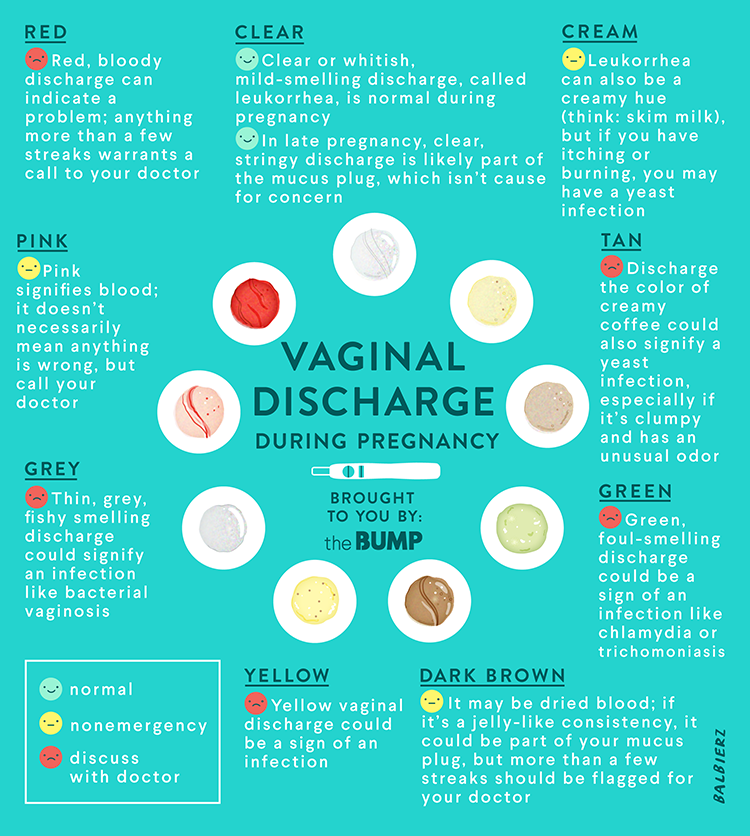 In this case, spotting occurs in a third of pregnant women. This most often occurs between 28 and 30 weeks, when the lower segment of the uterus is most prone to stretching and thinning. The discharge is repeated, the woman does not experience any pain, so it may be too late to see a doctor for an examination. This threatens the child with a lack of nutrients and oxygen, because it is through the placenta that the fetus is nourished. For a pregnant woman, this is fraught with acute placental abruption and severe bleeding, which is always problematic to stop, especially at home.
In this case, spotting occurs in a third of pregnant women. This most often occurs between 28 and 30 weeks, when the lower segment of the uterus is most prone to stretching and thinning. The discharge is repeated, the woman does not experience any pain, so it may be too late to see a doctor for an examination. This threatens the child with a lack of nutrients and oxygen, because it is through the placenta that the fetus is nourished. For a pregnant woman, this is fraught with acute placental abruption and severe bleeding, which is always problematic to stop, especially at home.
Bloody discharge during pregnancy should force a woman to immediately contact her obstetrician-gynecologist.
Brown discharge during pregnancy also indicates the threat of termination of pregnancy, or bleeding "erosion" (decidual polyp) of the cervix. Therefore, you should not understand these issues on your own; when brown discharge appears, it is better to consult your doctor.
Brown discharge during a delay in menstruation as a sign of an ectopic pregnancy is very dangerous.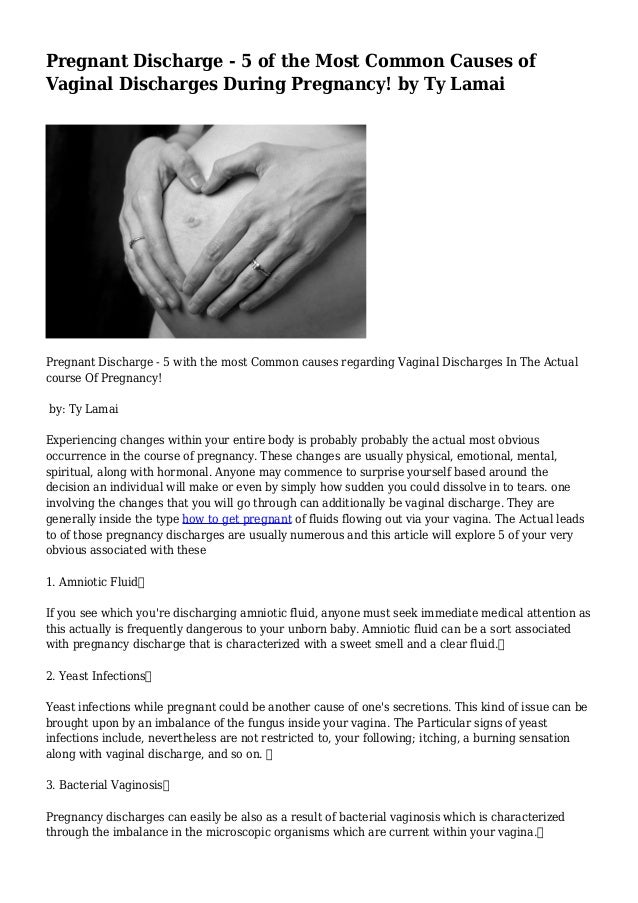 This condition requires immediate surgical care, as the growing embryo can rupture the wall of the fallopian tube at any time and cause internal bleeding. Therefore, with pain in the lower abdomen, which is accompanied by brown discharge from the genital tract and delayed menstruation, you should immediately call an ambulance.
This condition requires immediate surgical care, as the growing embryo can rupture the wall of the fallopian tube at any time and cause internal bleeding. Therefore, with pain in the lower abdomen, which is accompanied by brown discharge from the genital tract and delayed menstruation, you should immediately call an ambulance.
When the vagina becomes inflamed, the mucous discharge acquires a mucopurulent character, a greenish-yellow color, an unpleasant odor, burning and itching appear in the genital area. This is how chlamydia, mycoplasmosis, ureaplasmosis, trichomoniasis manifest themselves. Is it necessary to treat the infection during pregnancy, or is it better to do it after childbirth?
All sexually transmitted infections in pregnant women require treatment, as they can pass to the fetus and cause intrauterine infection (IUI). IUI is very dangerous for a child - it leads to his death or serious illness. Infection of a child during childbirth can lead to such serious complications as pneumonia, severe damage to the brain, kidneys, liver, and blood poisoning (sepsis).
Today, obstetricians and gynecologists have learned to treat any infection in pregnant women in accordance with special guidelines for the timing of pregnancy, so that it is effective and safe for mother and fetus. It is not the treatment that should be feared, but the infection itself and its consequences.
Medicines that are used to treat pregnant women have passed the necessary clinical trials, during which it was proved that they do not have a negative effect on the pregnant woman and the fetus, including that they do not have a teratogenic effect (do not cause deformities in the fetus).
Sometimes the discharge is mucous in nature, occurs upon contact with an irritant or allergen. It can be synthetic tight underwear, allergies to fabrics, toiletries, personal care products. If irritation and allergens are not eliminated in time, then an infection that lives on the mucous membranes of the genital organs will definitely join.
Hygiene measures are mandatory for pregnant women.







